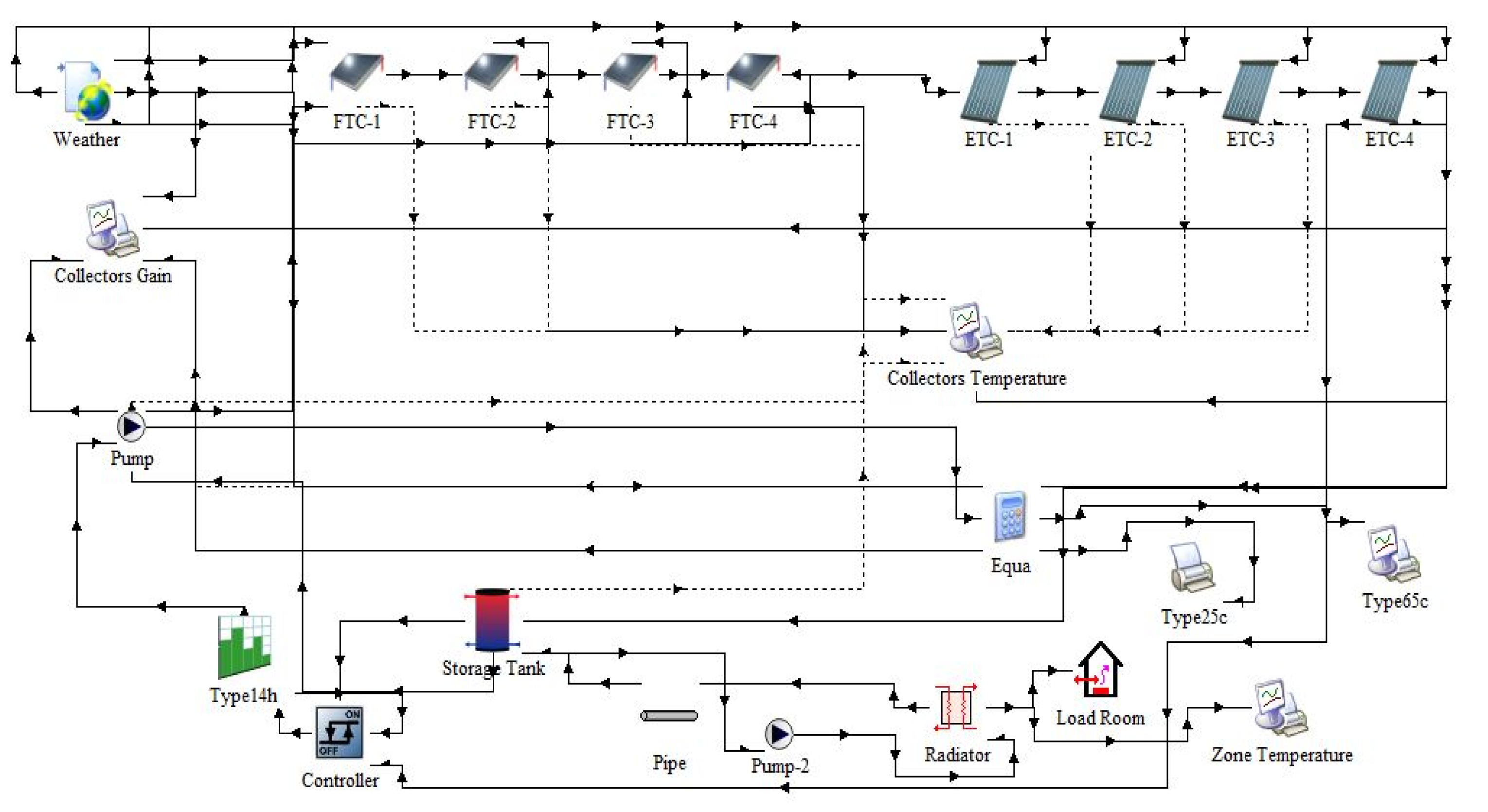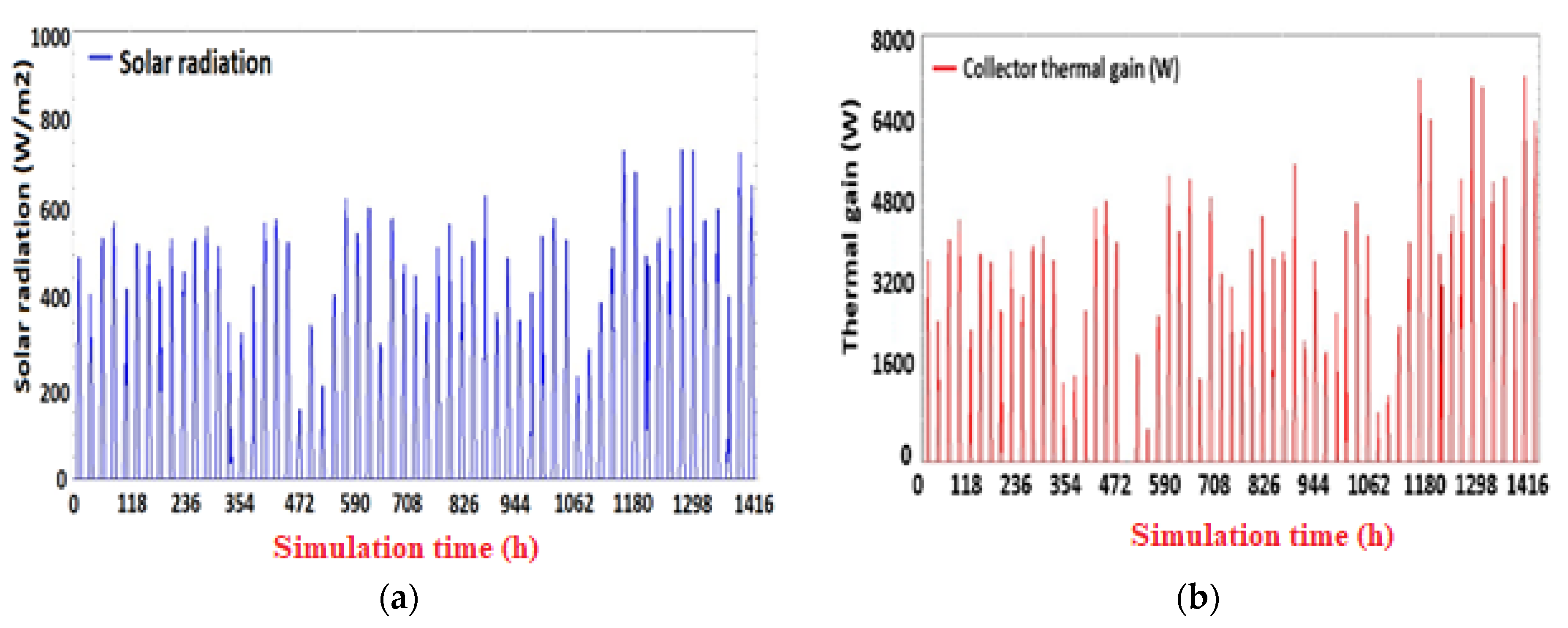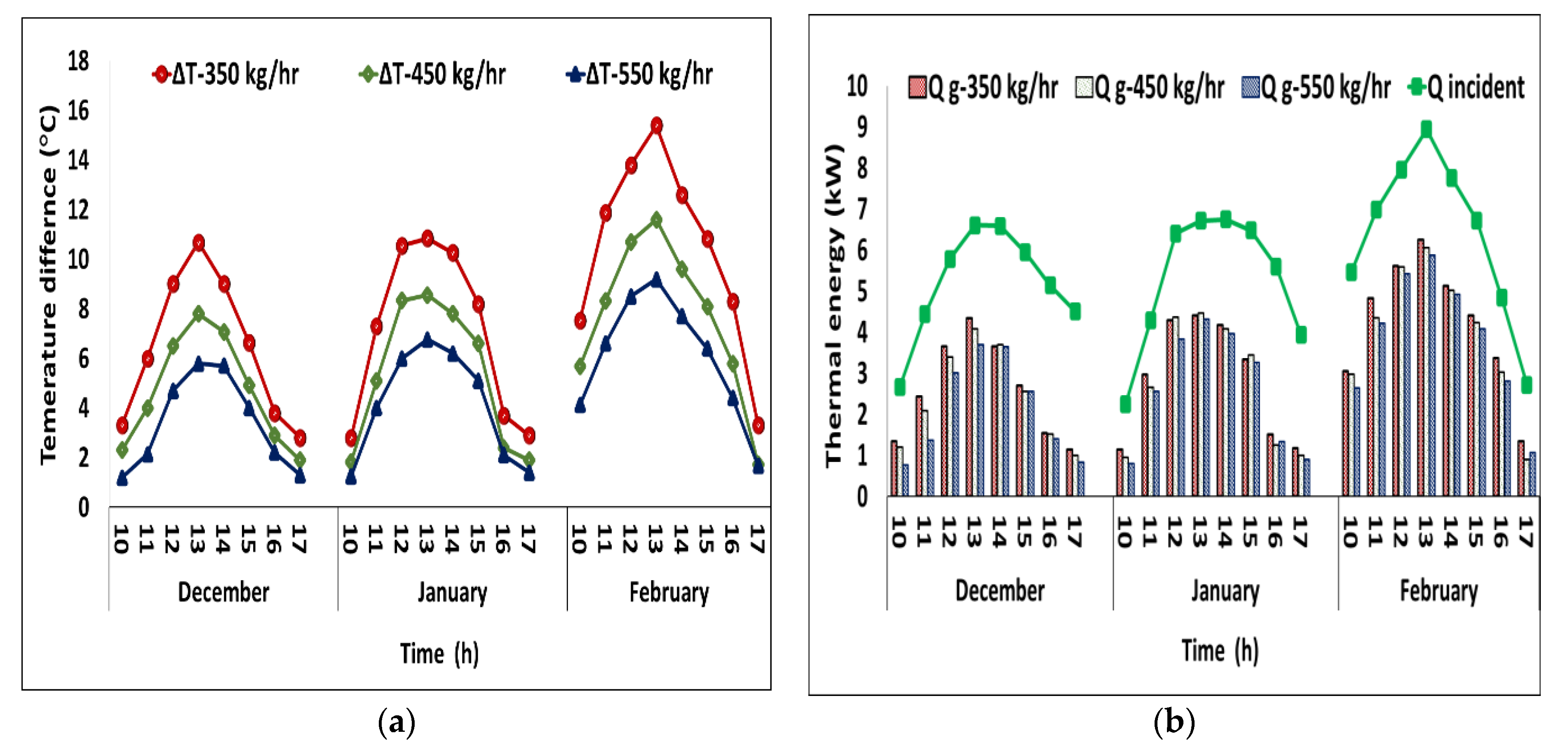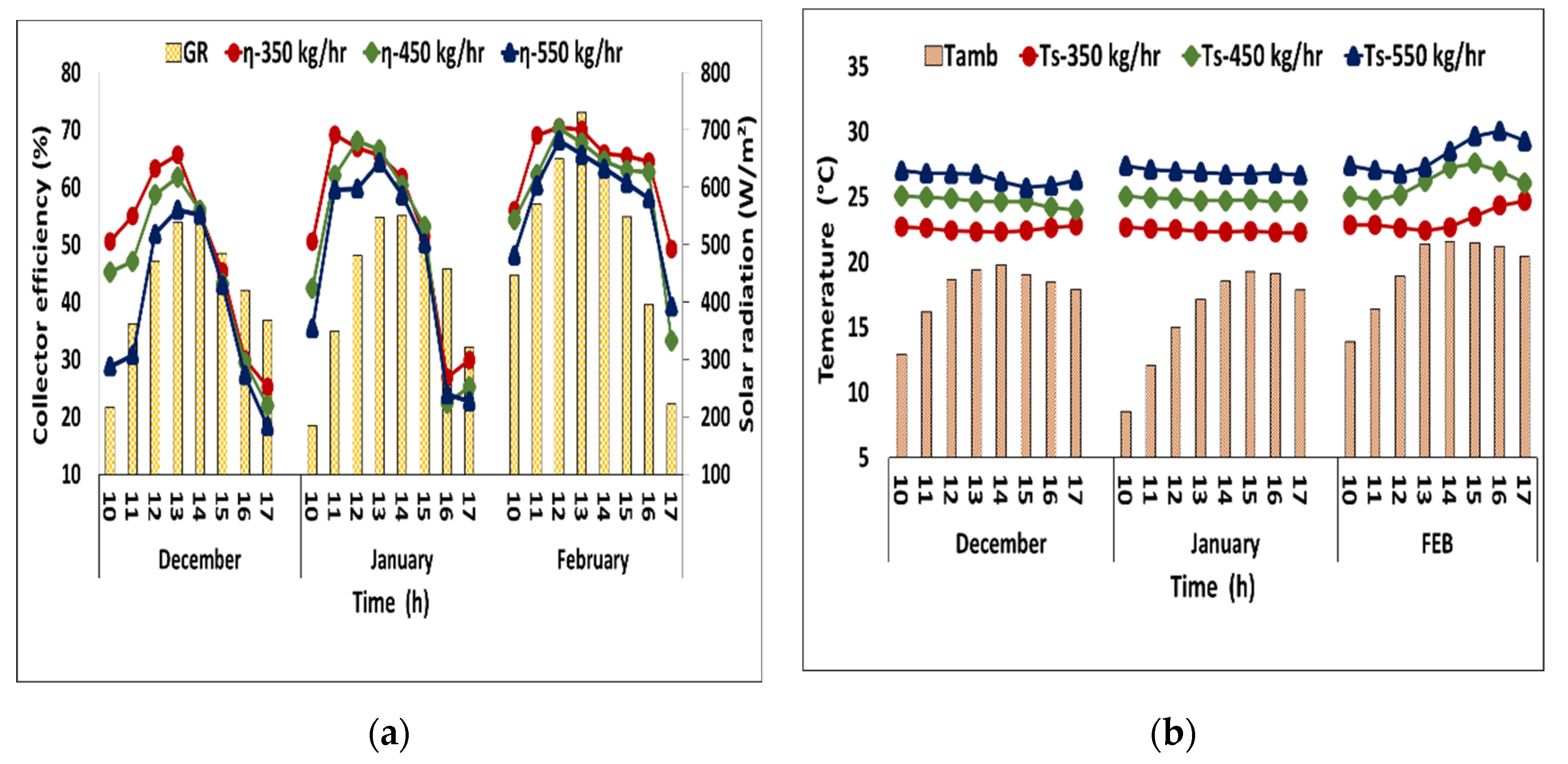Model Development and Transient Seasonal Performance Analysis of a Solar Space Heating System under Climate Conditions of PAKISTAN †
Abstract
:1. Introduction
2. Model Development and Transient Simulations
2.1. Model Development
2.2. Working of the System
3. Results and Discussion
Thermal Analysis of Hybrid Solar Collector
4. Conclusions
Institutional Review Board Statement
Informed Consent Statement
Data Availability Statement
Acknowledgments
References
- Abas, N.; Kalair, A.; Khan, N. Review of fossil fuels and future energy technologies. Futures 2015, 69, 31–49. [Google Scholar] [CrossRef]
- Wakeel, M.; Chen, B.; Jahangir, S. Overview of energy portfolio in Pakistan. Energy Procedia 2016, 88, 71–75. [Google Scholar] [CrossRef] [Green Version]
- Tiwari, G.; Tiwari, A. Handbook of Solar Energy; Springer: Berlin/Heidelberg, Germany, 2016. [Google Scholar]
- Lebar, A.; Dillon, H.E. Performance and Optimization of a Small Hybrid Solar-Thermal Collector. Smart Grid Renew. Energy 2018, 9, 259–271. [Google Scholar]
- Ali, M.; Sahir, M.H. Optimization of Heating, Ventilation, and Air-Conditioning (HVAC) System Configurations. Ph.D. Thesis, University of Engineering & Technology, Taxila, Pakistan, 2013. [Google Scholar]
- Mohasseb, S.; Kasaeian, A. Comparing the Performance of Flat Plate Collector and Evacuated Tube Collector for Building and Industrial Usage in Hot and Cold Climate in Iran with TRNSYS Software. In Proceedings of the Ninth International Conference on Engineering Computational Technology, Napoli, Italy, 2–5 September 2014. [Google Scholar]
- Tian, Z.; Perers, B.; Furbo, S.; Fan, J. Thermo-economic optimization of a hybrid solar district heating plant with flat plate collectors and parabolic trough collectors in series. Energy Convers. Manag. 2018, 165, 92–101. [Google Scholar] [CrossRef] [Green Version]
- Kousar, R.; Ali, M. Annual transient simulations and experimental investigation of a hybrid flat plate and evacuated tube collectors array in subtropical climate. Therm. Sci. 2020, 24, 1435–1443. [Google Scholar] [CrossRef] [Green Version]




Publisher’s Note: MDPI stays neutral with regard to jurisdictional claims in published maps and institutional affiliations. |
© 2022 by the authors. Licensee MDPI, Basel, Switzerland. This article is an open access article distributed under the terms and conditions of the Creative Commons Attribution (CC BY) license (https://creativecommons.org/licenses/by/4.0/).
Share and Cite
Arsalan, M.; Ali, M.; Kousar, R. Model Development and Transient Seasonal Performance Analysis of a Solar Space Heating System under Climate Conditions of PAKISTAN. Eng. Proc. 2021, 12, 84. https://doi.org/10.3390/engproc2021012084
Arsalan M, Ali M, Kousar R. Model Development and Transient Seasonal Performance Analysis of a Solar Space Heating System under Climate Conditions of PAKISTAN. Engineering Proceedings. 2021; 12(1):84. https://doi.org/10.3390/engproc2021012084
Chicago/Turabian StyleArsalan, Muhammad, Muzaffar Ali, and Rubeena Kousar. 2021. "Model Development and Transient Seasonal Performance Analysis of a Solar Space Heating System under Climate Conditions of PAKISTAN" Engineering Proceedings 12, no. 1: 84. https://doi.org/10.3390/engproc2021012084
APA StyleArsalan, M., Ali, M., & Kousar, R. (2021). Model Development and Transient Seasonal Performance Analysis of a Solar Space Heating System under Climate Conditions of PAKISTAN. Engineering Proceedings, 12(1), 84. https://doi.org/10.3390/engproc2021012084






